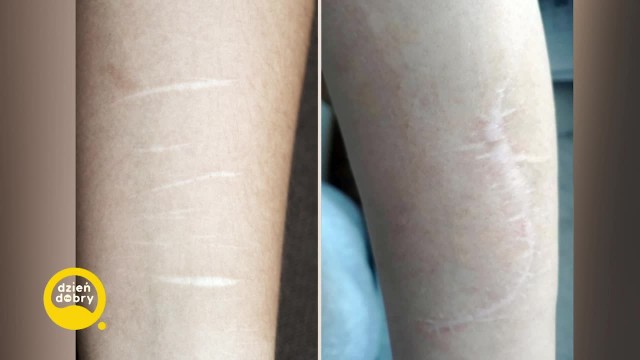Tattoo removal without scars - is it possible?

A tattoo that was once an expression of personality or an important symbol can, over time, become an unwanted feature on the skin. Can it be removed with a trace? Until a few years ago, getting rid of a tattoo was associated with a high risk of scarring, but today modern laser technology makes it possible to effectively and safely remove the ink without damaging the skin. How does laser tattoo removal work? What are the chances of complete removal of the pigment?
Tattoo forever? Not forever! Modern methods of its removal
Tattoos have been a means of self-expression for centuries, but changing aesthetic preferences, life situations or professional considerations can make the need to remove them over time.
Today there are several methods of tattoo removal, but laser is the most effective and least invasive solution. Traditional methods, including dermabrasion or surgical skin excision, were associated with a high risk of scarring and a long recovery. The use of bleaching creams or chemical peels usually did not produce satisfactory results, leaving uneven skin tone. That's why laser tattoo removal has become the gold standard, as it breaks up the pigment in the skin without causing deep tissue damage.
Laser tattoo removal - how does it work?
Laser tattoo removal is an advanced method that involves breaking up ink particles with pulses of laser light. The process is precise and selective, meaning that the laser light acts only on the pigment, without damaging the surrounding skin tissues.
Stages of laser action on tattooing.
- Absorption of light by pigment. The laser emits pulses of light that are absorbed by the ink particles in the skin. Each color of ink requires a different wavelength, so lasers with different wavelength ranges are often used in modern treatments.
- Dye breakdown. Under the influence of heat, the ink particles break down into microscopic fragments, allowing the body to gradually remove them.
- Natural removal of pigment by the body. Fine ink particles are absorbed by the immune system and removed naturally through the lymphatic system. This process takes several weeks, so the effects of tattoo removal are not immediate, and full results are visible only after a series of treatments.
Modern PicoSure or Q-Switch lasers (it's an innovative device that emits light with a wavelength of 1064/532 nm), allow to break down the pigment in a precise and minimally invasive way, which significantly reduces the risk of scarring or discoloration. As a result, laser tattoo removal is one of the safest methods today, allowing to completely or partially get rid of the unwanted design from the skin.
Benefits of laser tattoo removal - a modern and effective solution
The introduction of laser technology has completely changed the approach to tattoo removal, offering effective, precise and minimally invasive methods to remove even deeply embedded pigment.
Removal of even difficult pigments
Laser tattoo removal is one of the most effective methods of eliminating unwanted designs on the skin. Modern devices allow the removal of various colors of ink, including dark and light pigments that were previously difficult to eliminate. Thanks to precise technology, the laser can effectively break down the pigment into microscopic particles, which are then removed naturally by the body.
Safety and minimal invasiveness
The laser tattoo removal procedure is relatively minimally invasive, meaning that it does not require surgical disruption of the skin. Redness and slight swelling may occur after each treatment, but these symptoms quickly subside. Thanks to modern cooling systems and precise laser intensity control, it is possible to reduce the discomfort experienced and avoid damage to surrounding tissues.
No scars and uniform skin tone
One of the most important aspects of laser tattoo removal is the minimal risk of scarring. Modern lasers work selectively - they focus energy only on the pigment in the skin, without affecting its structure, which allows the skin to remain smooth and uniform after treatment. Unlike older methods, which often led to scarring and unevenness, laser therapy allows for gradual and controlled removal of the pigment, without the risk of permanent damage to the skin.
Individual approach and adaptation of therapy to the patient
Every tattoo is different - it differs in the depth of ink deposition, color and chemical composition of the pigment. That's why modern clinics take a personalized approach to tattoo removal, adjusting the laser parameters to the specific case. The number of treatments and intensity of therapy depend on the size, color and age of the tattoo, as well as the individual characteristics of the patient's skin.
Laser tattoo removal is currently the most effective method, allowing to eliminate the unwanted design without the risk of scarring. However, it is important to choose a reputable clinic and experienced specialists who work with state-of-the-art equipment. A properly performed procedure not only removes the tattoo, but also ensures the safety and comfort of the patient, leaving the skin healthy and uniform.
FAQ
Is laser tattoo removal effective?
Yes, laser tattoo removal is currently the most effective method of eliminating the unwanted design from the skin. Modern technologies allow the removal of both dark and light colors, and the results depend on the depth of ink deposition, its composition and the number of treatments performed.
How many treatments does it take to completely remove a tattoo?
The number of sessions depends on the color and type of ink, the depth of pigment deposition, the location of the tattoo on the body, and the body's individual reaction to the laser. Usually 4 to 10 treatments are required, performed at intervals of 6-8 weeks, to allow the skin to regenerate and gradually remove the broken pigment particles.
Does laser tattoo removal hurt?
During the procedure, mild discomfort may be felt, compared to a prick or "shooting a rubber band" across the skin. Skin cooling systems or topical anesthesia in the form of anesthetic cream are used to reduce pain.
Can a laser completely remove a tattoo?
Many tattoos can be removed without leaving scars, especially if the procedure is performed with modern lasers and by an experienced specialist. In the case of very dark or deep-seated tattoos, subtle marks, skin lightening or minor discoloration may remain, but the risk is small.
How long does a single tattoo removal session last?
The duration of the procedure depends on the size of the tattoo.
- Small tattoos (e.g. letters, symbols) - about 5-10 minutes,
- Medium tattoos (for example, on the forearm) - about 20-30 minutes,
- Large tattoos (e.g., back, thigh) - up to 60 minutes.
What does the skin look like after the procedure?
Immediately after the procedure, the skin may be red, slightly swollen and irritated. Sometimes there is a whitish tarnish (known as the confluence effect), which disappears after a few hours. Within a few days there may be mild peeling or scabs, which should be left to fall off on their own.
How to take care of the skin after laser tattoo removal?
After the procedure, it is important not to scratch or scrape off scabs, avoid sun exposure and use creams with a high SPF 50+, moisturize the skin with gentle products recommended by a specialist, do not use the pool, sauna or tanning bed for at least 2 weeks, and do not use scrubs or cosmetics containing acids until the skin has fully recovered.
Is laser tattoo removal safe?
Yes, if the procedure is performed in a professional clinic and by an experienced specialist, it is a safe and minimally invasive method. Modern lasers work selectively on the pigment, without damaging the surrounding tissues, which reduces the risk of complications.
Can any color tattoo be removed?
Dark colors are the easiest to remove, as they absorb the laser light well. Lighter colors, such as yellow, white or pastel shades, are more difficult to remove, but modern lasers make it possible to lighten them gradually.
Is it possible to remove a tattoo partially, such as only a portion of the design?
Yes, laser technology allows precise removal of a selected part of the tattoo without interfering with the rest of the design. This is useful for corrections, alterations or preparing the skin for a new tattoo (known as cover-up).
Are there contraindications to the procedure?
Yes, contraindications include pregnancy and breastfeeding, active skin infections at the tattoo site, tendency to scarring (keloids), autoimmune diseases and blood clotting disorders, recent sun exposure or use of self-tanners.
Can a tattoo be removed on tanned skin?
Tattoo removal on freshly tanned skin is not recommended, as it increases the risk of burns and discoloration. It is advisable to avoid tanning for at least 4 weeks before starting a series of treatments.
How much does laser tattoo removal cost?
The price of the treatment depends on:
- tattoo size,
- The number of sessions required,
- The colors used in the tattoo,
- The type of laser used.
The cost of a single session usually ranges from £300 to £1,500, depending on the complexity of the design and the amount of ink.
Can the tattoo reappear after removal?
No, if the tattoo is completely removed, the pigment will not return. However, in rare cases, deep tattoos may require additional sessions if traces of ink remain in the skin.














